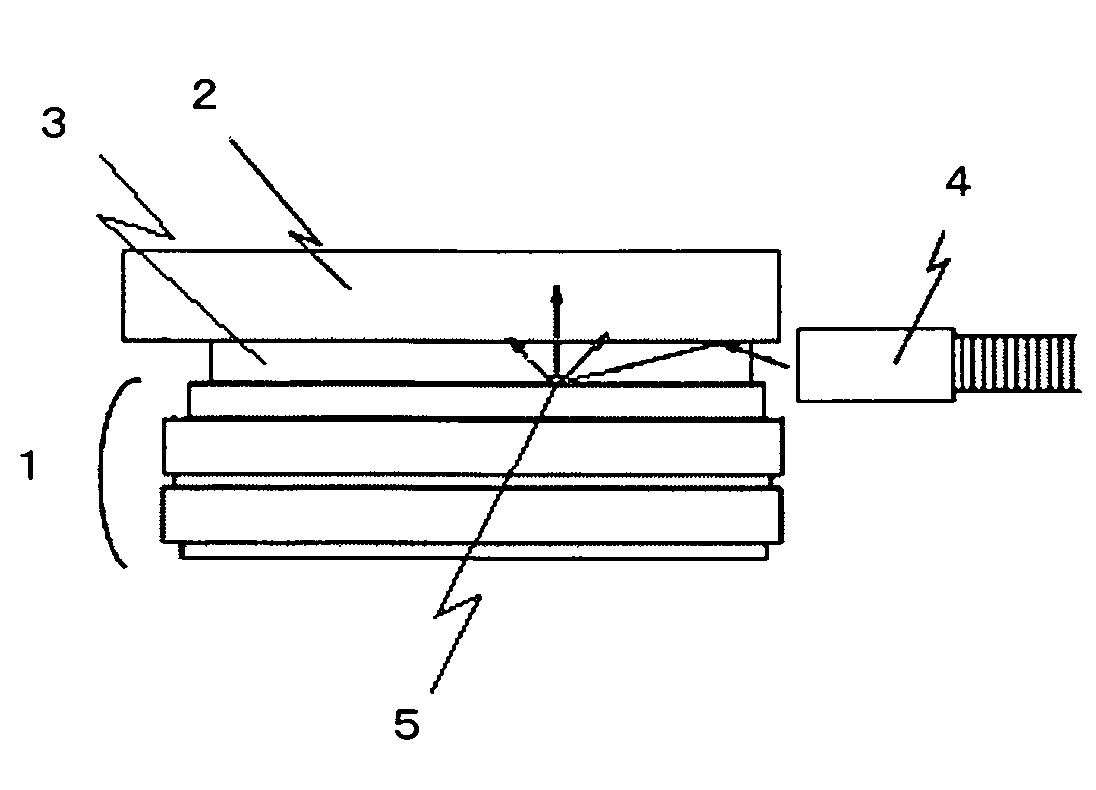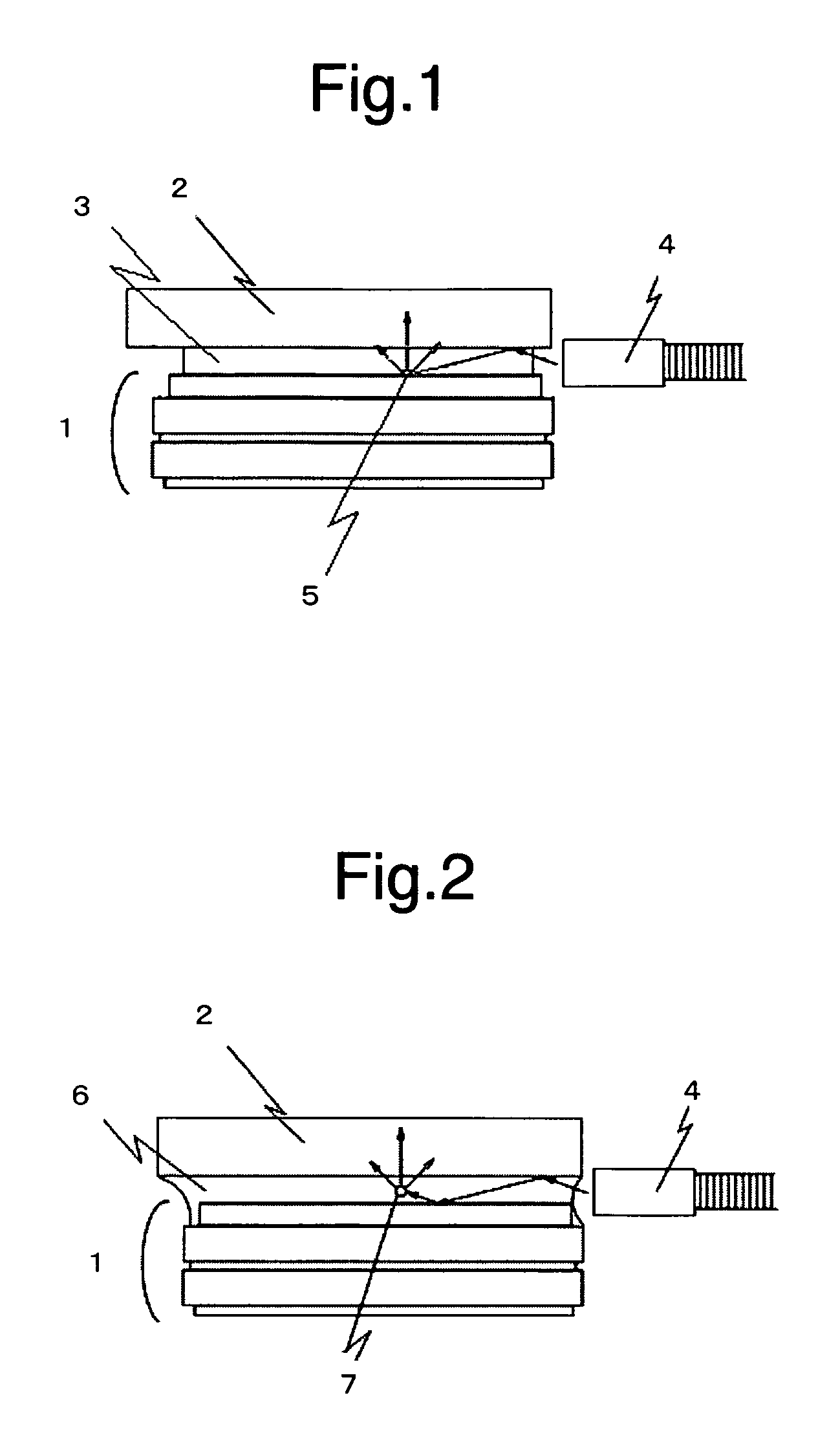Bonding method and method of manufacturing a display device
a display device and bonding method technology, applied in the direction of identification means, instruments, controlling lamination, etc., can solve the problems of air bubbles and foreign objects trapped during bonding, difficult to confirm the location of a defect in the touch panel, and inability to tell whether
- Summary
- Abstract
- Description
- Claims
- Application Information
AI Technical Summary
Benefits of technology
Problems solved by technology
Method used
Image
Examples
embodiment 1
[0026]An embodiment of the present invention is described below with reference to one of the accompanying drawings. FIG. 1 is a side view showing a visual check step of a bonding method according to this embodiment. A liquid crystal display 1 and a transparent member in the form of a cover plate 2 are bonded together with a transparent adhesive sheet 3. The liquid crystal display 1 is a TFT liquid crystal display. TFT elements are formed on one of two transparent substrates each of which is made of glass and has a thickness of 0.3 mm. Formed on the other opposite transparent substrate is a color filter. Between those two transparent substrates, a TN liquid crystal is oriented along orientation films, which are formed on surfaces of the transparent substrates. A polarizing plate is attached to each transparent substrate. The transparent cover plate 2 is an acrylic plate with a thickness of 1.5 mm. A side of the transparent cover plate 2 opposite to the displaying side is painted blac...
embodiment 2
[0028]An embodiment of the present invention is described below with reference to one of the accompanying drawings. FIG. 2 is a side view showing a visual check step of a bonding method according to this embodiment. Between a liquid crystal display 1 and a transparent member or cover plate 2, a transparent adhesive 6 which is not cured yet is filled. The liquid crystal display 1 is a TFT liquid crystal display. TFT elements are formed on one of two transparent substrates each of which is made of glass and has a thickness of 0.3 mm. Formed on the other opposite transparent substrate is a color filter. Between those two transparent substrates, a TN liquid crystal is oriented along orientation films, which are formed on the surfaces of the transparent substrates. A polarizing plate is attached to each transparent substrate. The transparent cover plate 2 is an acrylic plate with a thickness of 1.5 mm. A side of the transparent cover plate 2 opposite to the displaying side is painted bla...
PUM
| Property | Measurement | Unit |
|---|---|---|
| thickness | aaaaa | aaaaa |
| wavelength | aaaaa | aaaaa |
| thickness | aaaaa | aaaaa |
Abstract
Description
Claims
Application Information
 Login to View More
Login to View More - R&D
- Intellectual Property
- Life Sciences
- Materials
- Tech Scout
- Unparalleled Data Quality
- Higher Quality Content
- 60% Fewer Hallucinations
Browse by: Latest US Patents, China's latest patents, Technical Efficacy Thesaurus, Application Domain, Technology Topic, Popular Technical Reports.
© 2025 PatSnap. All rights reserved.Legal|Privacy policy|Modern Slavery Act Transparency Statement|Sitemap|About US| Contact US: help@patsnap.com


